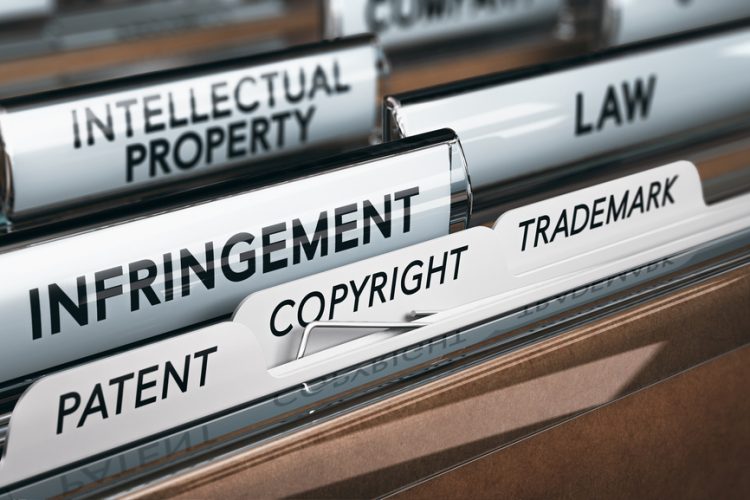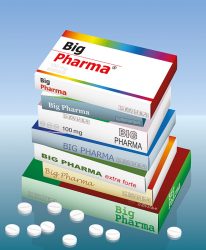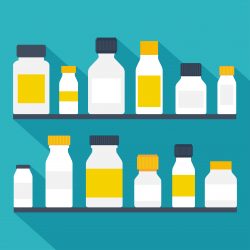Trademarks in the medical sphere: practice, examination and obstacles for registration in Russia, Ukraine and the CIS
Posted: 20 July 2020 | Alyona Chernoknyzhnaya (IPR GROUP), Dr Tatiana Lipovaya (IPR GROUP) | No comments yet
Dr Tatiana Lipovaya and Alyona Chernoknyzhnaya discuss some of the main considerations when applying for trademarks in the pharmaceutical industry in Russia, Ukraine and the CIS.


The pharmaceutical industry in Russia, Ukraine and in other Commonwealth of Independent States (CIS) countries can be considered one of the most complex industries when considering the management of intellectual property (IP), as it involves complicated legal, regulatory, linguistic and marketing factors.
It is worth mentioning that for many years the close connection between life sciences and IP has been based mostly on patent protection. In the meantime, we see that the strategic importance of selecting and working with a strong pharmaceutical brand (choosing the right trademark) has been fully recognised by pharmaceutical companies. The development of a trademark for new pharmaceutical products is a complex and complicated process, as there are numerous hurdles in the process that must be overcome.
Pharmaceutical trademarks are usually subject to thorough examination by the Patent and Trademark Offices (PTOs) in the CIS countries, in comparison to trademarks filed for other goods and/or services. The rigorous approach of the PTOs is to prevent a consumer from becoming confused between pharmaceutical products, which could have serious and even irreparable consequences.
…for many years the close connection between life sciences and IP has been based mostly on patent protection”
As a common rule often in such countries like Russia, Ukraine, Kazakhstan, Belarus, Georgia, Armenia, Azerbaijan, Kyrgyzstan, Tajikistan, Turkmenistan, Uzbekistan and Moldova, the trademark legislation protects not only manufacturers, but also the consumers’ rights as well. However, it is important to note that the process of registration might sometimes be more complicated compared to the EU, due to specific peculiarities of examination practice in each specific country of the CIS region.
The most common grounds of provisional refusals for trademark applications in “medical” classes, such as classes 05 and 10 of the NC, are relative grounds – the existence of prior trademark registrations with identical or confusingly similar verbal element(s) earlier applied or registered for homogeneous goods. For overcoming provisional refusals on relative grounds in some countries, it would be helpful to limit the list of applied goods to those which have been manufactured, or to file the initial application indicating the exact goods for which the trademark is used or intended to be used.
In some countries like Russia, examination requires a stricter approach to the similarity of trademarks. According to the Russian rules of examination, if the verbal element of an applied trademark is half or fully included in the already registered mark, it will be considered as confusingly similar. Protection in such cases can be gained only for trademarks with non-homogeneous list of goods and/or by providing a consent from the owner of the earlier mark.


Provisional refusals on absolute grounds, such as a misleading character or non-distinctiveness are not so rare for trademarks in the medical sphere in the CIS as well.
Another aspect should be kept in mind during the examination of medical trademarks, regarding the possibility of misleading consumers as to the goods and their manufacturer using confusing similarity to prior trademarks. Goods in class 05 of the NC – “pharmaceuticals for humans” – are goods acquired by conscious choice by consumers, following rigorous examination by the PTOs. The probability for these goods to be confused with other products on the market is reduced due to the fact that the choice and purchase of the pharmaceuticals are assisted by specialists with professional knowledge and experience – doctors. Pharmaceuticals are prescribed on the basis of individual needs of patients. In this case, the name of the trademark and design of the package would not be the main criteria for choosing of goods.
Pharmaceuticals for humans can only be sold through specific channels – pharmacies or drugstores. The choice of a particular pharmaceutical preparation by the average consumer is made with the assistance of doctors or sometime pharmacists in a pharmacy. Doctors can identify goods using many features – mainly the active components of the preparation and its manufacturer. Therefore, a trademark is not the main criteria of choice in the case of pharmaceutical and veterinary preparation.
As a rule, the applicants select the name of the desired trademark with a view of the following aspects: the trademark may include a part of the name of an active ingredient, reflect a purpose of its use or may be a purely fanciful word. Some companies use part of the name of the active ingredient along with the company trade name. However, none of these approaches when choosing a trademark name can guarantee a successful registration.


Summarising our experience in protecting trademarks in the medical sphere, we came to the following conclusions and considerations:
- as a good practice before applying for a new trademark, conducting a preliminary search on possible prior rights for similar marks with the aim of avoiding provisional refusals in the future is strongly recommended
- when the title/name is being chosen for a trademark by an applicant, it is advisable to use some fanciful word or a combination name of a preparation with the name of a manufacturer; however it is best to avoid names, which are rarely distinctive and are similar to the active ingredients of pharmaceutical preparations
- if a trademark applied in class 05 receives a provisional refusal on relative grounds, such as close similarity by verbal elements and/or homogeneity of the list of goods in class 05, all obstacles associated with a particular case should be evaluated by an experienced trademark attorney, who would be able to provide recommendations on the reliable way to obtain trademark protection
- one of the major arguments in the case of receiving a provisional refusal based on confusing similarities of pharmaceutical marks derives from peculiarities of the medical market. Pharmaceutical preparations are goods of conscious choice, however, the probability for these goods to be confused on the market is limited due to the fact that the choice and purchase of the pharmaceuticals are assisted by specialists with the required professional knowledge and experience.
- parallel to arguments in favour of dissimilarity of the mark set up in the objection, additional arguments related to the dissimilar focus of the parties’ activities and distribution channels, which prevent conflict on the market between the mentioned trademarks and voids the likelihood of confusion, as well as the evidences of trademark’s use, should be available to the examination
- in a large number of cases, applied trademarks have minor differences (in one or two letters) with the opposed marks, thus exhibit a high range of similarity. In most cases, such provisional refusals could be overcome only by providing a letter of consent and limitation of the list of goods.
- litigation procedures for ‘medical’ trademarks, as well as for any other trademarks, are quite complicated, especially in case of claiming misleading on the market. To protect the right to an IP object, it is necessary to provide a solid set of evidence of prior trademark use and the availability of the goods to consumers on a market.
This overview of our experience, focused on the characteristics of trademark protection for pharmaceuticals, will hopefully help trademark practitioners, as well as individual and corporate applicants to gain a better understanding of peculiarities of prosecution of ‘medical’ trademarks on the CIS market, thus protecting the rights of the ‘medical’ trademarks more effectively.
About the authors




Related topics
Industry Insight, Labelling, Legal, Packaging, Patents, Regulation & Legislation









